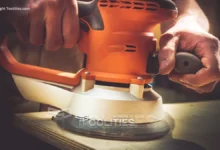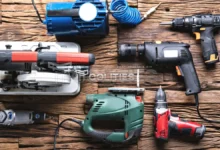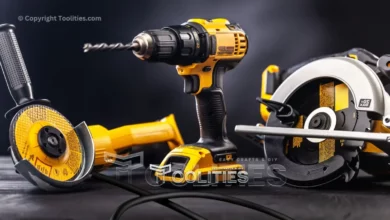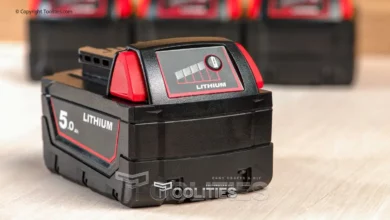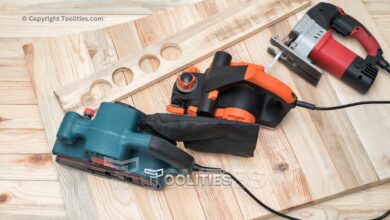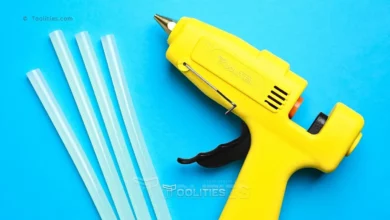DIY 101: The Top 10 Power Tools for DIY Enthusiasts
For the DIY enthusiast, having the right tools is essential to a successful project. While there are many tools to choose from, power tools can make your life a lot easier. They are designed to make quick work of even the most challenging tasks. However, with so many options on the market, it can be challenging to know which ones to choose. In this post, we will walk you through the top 10 power tools for DIY enthusiasts.
From drills to saws, sanders to grinders, we’ve got you covered. Whether you’re a seasoned Bricolaje pro or just getting started, these tools will help you take your projects to the next level. With these tools in your arsenal, you will be able to tackle any project with confidence and ease. So, let’s get started!
Table of Contents
Top 10 Power Tools for DIY Enthusiasts
Whether you're a seasoned DIY enthusiast or just starting out, having the right tools can make all the difference in the world. The right power tools can make completing projects much easier and faster, while also allowing you to tackle more complex projects.

That's why we've put together this list of the Top 10 Power Tools every DIY enthusiast should have in their tool collection. From drills and saws to sanders and jigsaws, we've got you covered.
Not only will we cover the basics of each tool, but we'll also give you some tips on what to look for when shopping for each tool. With our help, you'll be able to make informed decisions and choose the best tools for your needs and budget.
So whether you're a DIY beginner or a seasoned pro, get ready to take your projects to the next level with these essential power tools. Let's get started!
#1. Power Drill
The power drill is one of the most versatile and essential power tools that every DIY enthusiast must have in their toolkit. Its primary function is drilling holes into wood, metal, plastic, and other materials, but with the right attachments, it can also be used for sanding, grinding, and even mixing paint and cement.
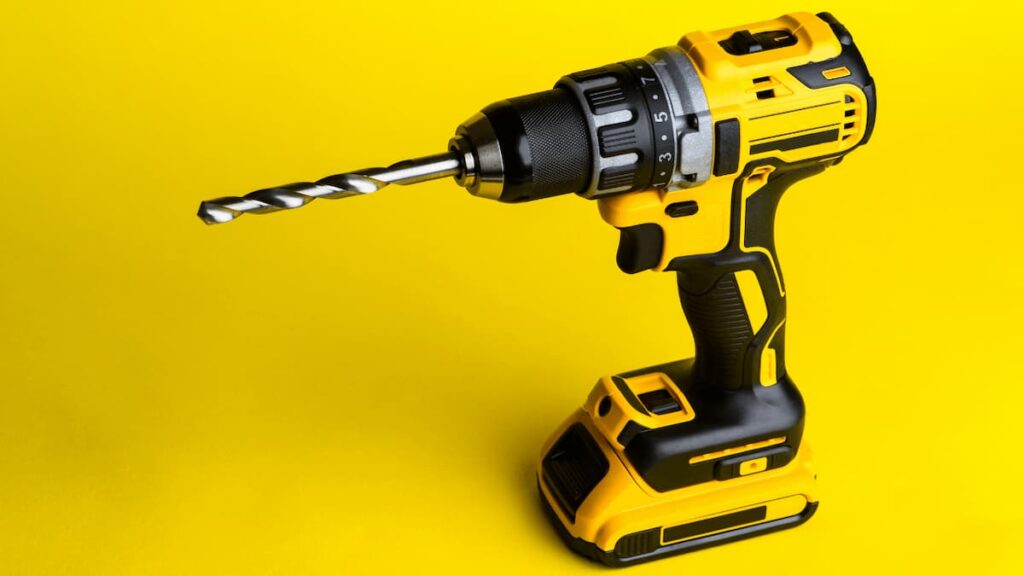
When buying a power drill, you have the option of corded or cordless. Corded drills tend to be more powerful and suitable for heavy-duty tasks, while cordless drills are more portable and convenient for small jobs. You should also consider the drill's chuck size, which determines the maximum diameter of the drill bit it can hold.
When using a power drill, it's important to follow safety precautions like wearing protective eyewear and keeping your fingers away from the drill bit. You should also use the right type of drill bit for the material you're drilling into and ensure that the bit is securely fastened in the chuck.
With a power drill in your toolkit, you'll be able to tackle a wide range of DIY projects and make precise holes with ease. Whether you're building a bookshelf, installing shelves, or making repairs around the house, a power drill is an essential tool that will make your DIY projects faster and more efficient.
#2. Circular Saw
When it comes to cutting wood, a circular saw is a must-have tool for any DIY enthusiast. It is a versatile power tool that can make both straight and angled cuts with ease. The circular saw is ideal for cutting large pieces of wood, such as boards or sheets of plywood, quickly and accurately. It can also be used to make bevel cuts, which are angled cuts that are commonly used in woodworking projects.
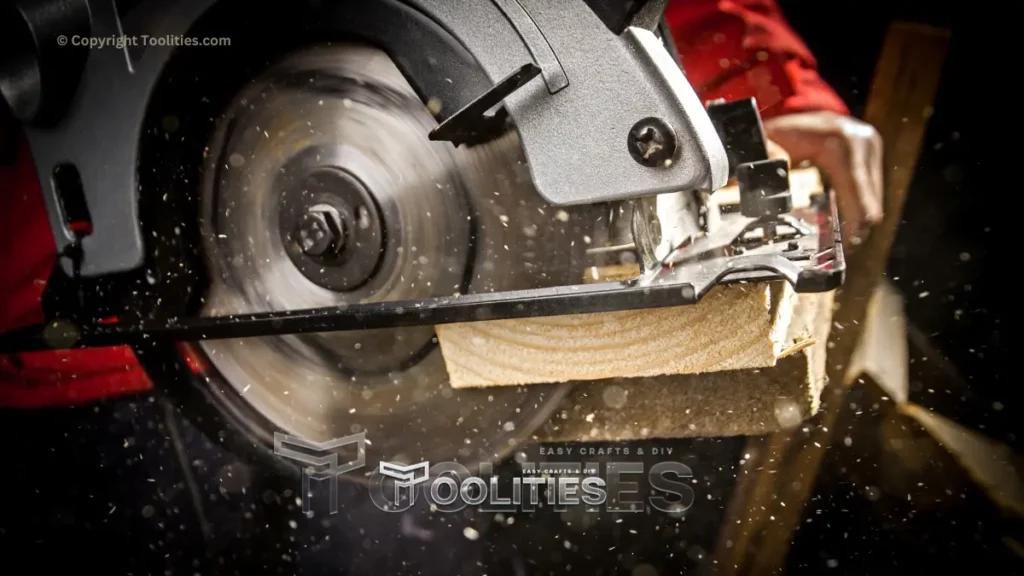
One of the great things about a circular saw is that it is portable and can be easily taken to job sites. It is also relatively lightweight, making it easy to handle and control. When using a circular saw, it is important to follow safety precautions, such as wearing eye protection and making sure the blade is properly tightened and adjusted. With a circular saw in your tool collection, you'll be able to tackle a wide range of DIY projects, from building furniture to installing hardwood flooring.
#3. Jigsaw
A jigsaw is an incredibly versatile power tool and a must-have for any DIY enthusiast. It is a handheld saw that can be used to make complex cuts in various materials like wood, metal, plastic, and even ceramic tiles. The blade of a jigsaw is thin and narrow, which allows it to make intricate cuts with ease. With a jigsaw, you can create curves, circles, and even intricate designs on wood or metal.
One of the biggest advantages of a jigsaw is its ability to make plunge cuts. This means that you can start your cut anywhere on the material, without the need to drill a pilot hole. This makes it an ideal tool for cutting out shapes from the middle of a material, or for cutting holes for electrical sockets and switches.
When choosing a jigsaw, look for one with variable speed control, as this will allow you to adjust the speed of the blade to suit the material you are cutting. You should also look for a jigsaw with a dust blower, which will keep the cutting line visible and free of debris.
Overall, a jigsaw is a versatile and essential power tool for any DIY enthusiast. With a good quality jigsaw in your toolkit, you will be able to tackle a wide range of DIY projects with ease and precision.
#4. Miter Saw
A miter saw is a powerful tool that is essential for any DIY enthusiast who deals with woodworking projects. This tool is designed to make precise and accurate cuts at various angles, making it perfect for cutting baseboards, crown molding, and trim work. With a miter saw, you can make crosscuts, bevel cuts, and compound cuts with ease.
One of the key advantages of a miter saw is its versatility. It can be used to make angled cuts on a wide range of materials, including wood, plastic, and metal. Whether you're building a bookshelf, a picture frame, or a birdhouse, a miter saw will make your work faster, easier, and more accurate. It's also a great tool for making repeat cuts, which is perfect for DIY projects that require multiple identical pieces.
When choosing a miter saw, it's important to consider the blade size, motor power, and cutting capacity. A 10-inch miter saw is perfect for most DIY projects, while a 12-inch saw is ideal for larger projects. The motor power should be sufficient to handle the material you're cutting, and the cutting capacity should be wide enough to accommodate the size of your workpiece.
In conclusion, a miter saw is an essential tool for any DIY enthusiast who enjoys woodworking projects. With its precision, accuracy, and versatility, it's sure to become your go-to tool for all your cutting needs.
#5. Reciprocating Saw
The reciprocating saw is a versatile power tool that can cut through a wide range of materials, including wood, metal, plastic, and even masonry. Its blade moves back and forth in a reciprocating motion, which is where the tool gets its name. This action allows the saw to make quick and easy cuts through all kinds of materials.
One of the key benefits of a reciprocating saw is its ability to make flush cuts. This means that you can use it to cut materials flush with a wall or other surface, which can be particularly useful when removing old plumbing or electrical fixtures. It is also great for demolition work, such as cutting through nails and screws or removing damaged drywall.
When choosing a reciprocating saw, it is important to consider the power of the tool, as well as the length of the blade. Look for a saw with a high amp rating and variable speed settings, as this will give you more control over the tool and allow you to work with a wider range of materials. A longer blade will also give you more versatility, as it will be able to reach into tighter spaces and make longer cuts.
Overall, a reciprocating saw is a must-have tool for any DIY enthusiast. Whether you are working on a small home renovation project or a larger construction job, this tool will make your work faster, easier, and more efficient.
#6. Rotary Tool
The rotary tool is a versatile and powerful tool that can perform a variety of tasks. It's perfect for cutting, sanding, polishing, grinding, and engraving. This tool is a must-have for any DIY enthusiast as it can handle a range of materials like wood, metal, plastic, and more.
One of the best things about the rotary tool is the range of attachments that can be added to it. These attachments can perform even more specialized tasks like cutting through tile or even sharpening your lawnmower blades. The flexibility of the rotary tool makes it an essential tool for any DIY enthusiast.
When choosing a rotary tool, look for one with a variable speed control. This will allow you to adjust the speed to match the task at hand. Also, make sure it comes with a range of attachments to get the most out of your tool.
With a rotary tool in your toolbox, you'll be able to tackle a wide range of DIY projects with ease. From carving intricate designs to sanding rough edges, this tool is a versatile and essential addition to your power tool collection.
#7. Belt Sander
The belt sander is a must-have tool for any DIY enthusiast. This tool is designed to sand large surfaces quickly and efficiently. It can be used for a variety of projects, from sanding down rough edges on a piece of wood to refinishing a floor. The belt sander is a versatile tool that can be used on both flat and curved surfaces, making it a great addition to any workshop.
One of the main benefits of using a belt sander is speed. It can sand down large areas quickly, which is especially useful when working on a large project. The sandpaper used in a belt sander is also much more durable than the sandpaper used in a hand sander, meaning that it will last longer and require less frequent changes.
Another advantage of the belt sander is that it can be used to remove old finishes from a piece of wood. This is particularly useful when refinishing furniture or other wooden items. The belt sander can quickly strip away old paint or varnish, leaving a smooth surface that is ready for a new finish.
When using a belt sander, it's important to follow safety guidelines. The sanding belt moves at a high speed and can be dangerous if not used correctly. Always wear eye and ear protection, and make sure to keep your hands and fingers away from the sanding belt. With proper use and care, a belt sander is a valuable tool that can help you tackle a wide range of DIY projects.
#8. Orbital Sander
An orbital sander is a power tool that every DIY enthusiast should have in their toolkit. This versatile tool will save you countless hours of sanding by hand and give you a much smoother finish on your projects. An orbital sander is particularly useful for smoothing out rough or uneven surfaces, removing paint or varnish, or preparing wood for staining or painting.
One of the benefits of an orbital sander is that it is very easy to use. Simply attach a sanding pad to the tool, plug it in, and turn it on. The sander will vibrate in small circles, which will help to prevent swirl marks on the surface you are sanding. Another benefit of an orbital sander is that it is available in a variety of sizes, which makes it perfect for sanding large surfaces, tight corners, or hard-to-reach areas.
When choosing an orbital sander, it is important to consider the size of the sanding pad. Larger sanding pads are best for sanding large surfaces, while smaller sanding pads are better for tight corners or hard-to-reach areas. You should also consider the power of the sander, as more powerful sanders will be better suited for tougher jobs.
Overall, an orbital sander is an essential tool for any DIY enthusiast. It will save you time, give you a smoother finish on your projects, and make your life much easier.
#9. Table Saw
A table saw is one of the most versatile and essential tools in any DIY enthusiast's toolkit. It is a powerful tool that can be used to make straight cuts, crosscuts, and angled cuts. Whether you are cutting a large piece of plywood or making precise cuts on smaller pieces of wood, a table saw can get the job done with ease.
One of the main advantages of a table saw is its accuracy. The blade is mounted on an adjustable arm that allows you to make precise cuts at various angles. With the help of a miter gauge, you can make crosscuts, bevel cuts, and compound cuts.
Another benefit of a table saw is its power. Table saws come in different sizes and power ratings, so you can choose one that suits your needs. A larger saw with a more powerful motor is ideal for cutting thick hardwoods and making long cuts, while a smaller saw is perfect for smaller jobs and can be easily transported to different locations.
When using a table saw, safety is paramount. Always use a blade guard to protect your hands and eyes from flying debris. It is also recommended to use a push stick when feeding the material through the saw to avoid any accidental slips and trips. With proper safety precautions in place, a table saw can be a highly valuable tool for any DIY enthusiast looking to take on more advanced projects.
Recap and Next Steps
In conclusion, having the right tools is crucial for any DIY project. The top 10 power tools we've covered in this article will help to make your DIY projects easier, quicker, and more efficient. However, it's important to remember that power tools can be dangerous if not handled properly. Always read the manufacturer's instructions carefully before using any power tool, wear protective gear, and take breaks when necessary.
If you're new to DIY, start small with simple projects and work your way up to more complex ones. Practice your skills and techniques, and don't be afraid to make mistakes – it's all part of the learning process.
Investing in quality power tools may seem like a big expense at first, but it will save you time and money in the long run. With the right tools and knowledge, you can tackle any DIY project with confidence and achieve professional-looking results.
So, what are your next steps? First, make a list of the power tools you need for your upcoming projects. Do your research and invest in quality tools that will last. If you're unsure about how to use a particular tool, don't hesitate to seek advice from a professional or watch tutorials online. Finally, start your DIY journey and enjoy the satisfaction of creating something with your own hands.We hope you enjoyed this comprehensive guide on the top 10 power tools every DIY enthusiast must have.
Whether you're a beginner or a seasoned DIYer, having the right tools can make all the difference when it comes to tackling a project. We hope our list helps you prioritize which tools to invest in and empowers you to take on more challenging projects with confidence. Happy DIYing!

